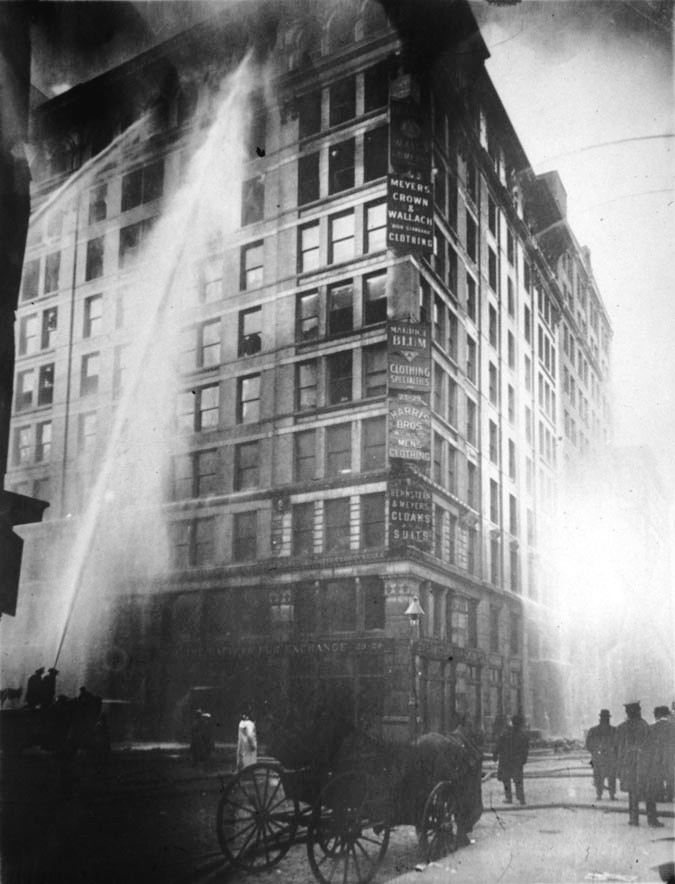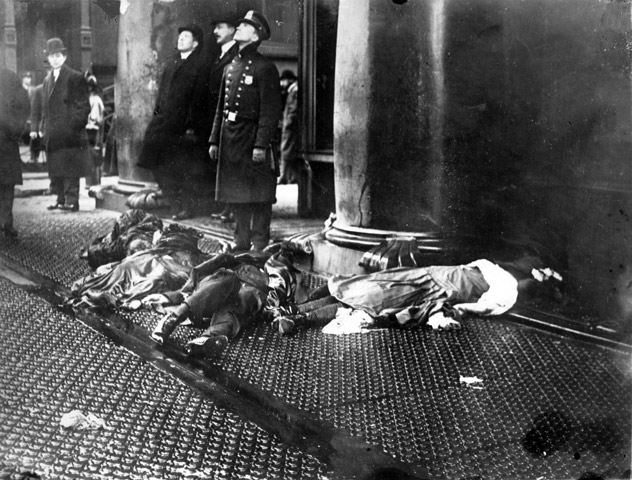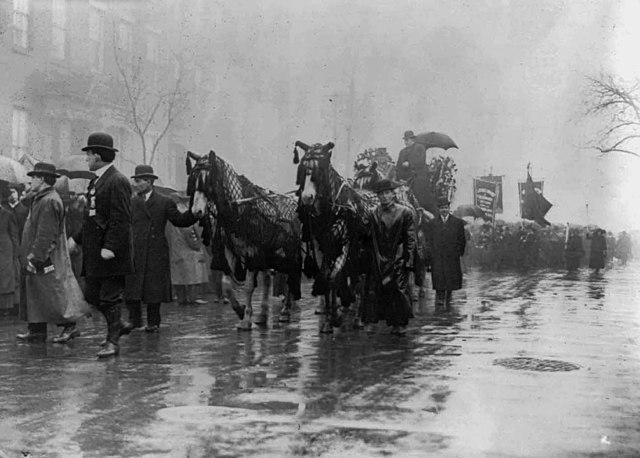
Originally published in New York World, March 26, 1911
Public Domain US/Wikimedia Commons
At approximately 4:40 p.m. Eastern Time on 25 March 1911, a fire would break out in the Asch Building in the Greenwich Village of Manhattan in New York City that was one of the deadliest industrial disasters in U.S. history. The Triangle Shirtwaist Factory, located on the 8th, 9th, 10th floors, was where the fire took place and was caused when fire broke out in a rag bin on the 8th floor. It was a Saturday afternoon with 600 workers, many of whom were recent Italian and Jewish immigrant women and girls aged between 14-23 years of age. The workday was coming to an end when the fire flared up, likely by a unextinguished cigarette or match, in the scrap rag bin that had at least two months of cuttings in it at the time of the fire. A passerby on Washington Street saw the smoke and reported it.
The Triangle Shirtwaist Factory was a sweatshop with cramped spaces and work areas for the employees. When the flames were noticed, people started screaming and hollering. Cramped spaces made it hard to escape quickly and the supposed buckets of water, a standard of the time, were empty many would report later. Many jumped on the machine tables hoping they could hop from table to table to get to the elevators, Narrow aisles with chairs and baskets made that hard. And then the fire start consuming them. The manager did try to use the fire hose on the fire but the hose was rotted and the valve rusted shut.
Get books about Triangle Shirtwaist Fire on Amazon.
Panicked workers ran to any exit they could find. There were four elevators but only one was operational; it could only hold twelve people at a time and broke down on the fourth trip due to heat from the fire.. Women began jumping down the shaft to escape the flames. Many would die as a result. There were two stairways but one was locked from the outside to prevent theft trapping the women who burned alive at the door. The other was impassable due to flames. Dozens took stairs to the roof and escaped the flames. The exterior fire escape, shoddy and poorly constructed, became unsafe with so many people trying to use it and collapsed sending 20 people to their death below. Those trapped above the fire escape succumbed to either smoke inhalation or were burned to death.

Original image source: Brown Brothers
Public Domain (US)/Wikimedia Commons
A crowd had gathered outside watching events unfold. Sadly many of those trapped decided, in groups of two or threes, to jump from the windows. The fire ladders only could reach up to the 7th floor and their safety nets were not strong enough to catch them. To the horror of those watching, 62 people leaped to their deaths causing many in the crowd to weep, faint, or cry hysterically. William Gunn Shepard, a reporter on the scene during the fire, said he heard a sound more horrible than can be described: the thud of a body hitting the stone sidewalk. A similar description would be made many years later when people, trapped in the Twin Towers on 9/11, choose to jump out of the windows. It was captured on film but those who heard the thuds said nearly the same thing as Shepard.

US Library of Congress, digital id cph.3a30009
Public Domain/Wikimedia Commons
The fire was put out in a half hour and then the shocking number of deaths would be known: 146. 123 women and 23 men perished. The youngest victims were two girls aged 14 and the oldest was a women who was 43. Many bodies were found all stacked up against a locked door. As reports of the fire and deaths spread in New York and across the nation, it caused outrage at the conditions the workers had to work in. The owners of the company, Max Blanck and Isaac Harris, faced a backlash in the community. Demonstrations outside the building the next day showed the how many were outraged. A memorial procession on April 5, 1911 was attended by over 60,000 people who stood in the rain to see it.
Why this is Important
This fire shocked not only New York but the entire nation. New York created a commission to investigate and recommend laws to make workplaces safer for workers. The International Ladies Garment Workers Union would galvanize and agitate for better conditions, pay, and safety for the workers. It would spark other reformers to seek more comprehensive changes to labor laws, safety, and workers compensation. Changes in other states and at the federal level would occur as well.
Aftermath
Max Blanck and Isaac Harris were put on trial for manslaughter but were acquitted of the charges. While the prosecution showed how locked doors and other thing were an issue, the defense argued that there was no proof the owners knew of the locked doors or authorized them. The were found liable in a civil suit for wrongful death but only paid out $75 per victim to the families despite getting a large insurance payment for the loss. The building still stands today though it has been renamed the Brown Building.
Get books about Triangle Shirtwaist Fire on Amazon.
Sources
Kiger, Patrick J., and Patrick J. Kiger. “How The Horrific Tragedy of the Triangle Shirtwaist Fire Led to Workplace Safety Laws.” HISTORY, 22 Aug. 2023, www.history.com/news/triangle-shirtwaist-factory-fire-labor-safety-laws.
The Triangle Shirtwaist Factory Fire | Occupational Safety and Health Administration. www.osha.gov/aboutosha/40-years/trianglefactoryfire.
—. “Triangle Shirtwaist Factory Fire.” Wikipedia, 19 Feb. 2024, en.wikipedia.org/wiki/Triangle_Shirtwaist_Factory_fire.
“The Triangle Shirtwaist Fire.” National Women’s History Museum, www.womenshistory.org/resources/lesson-plan/triangle-shirtwaist-fire.



